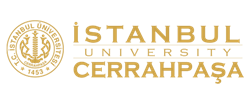The absolute neutrophil count of less than 1500 cells/mm3 is associated with increased risk of infection. Many protective measures are being taken to prevent infections caused by neutropenia because of treatments such as chemotherapy, radiotherapy, hematopoietic stem cell transplantation. The neutropenic diet is based on preventing bacterial and fungal contamination and eliminating colonizing microorganisms in the gastrointestinal tract to prevent infections caused by foodborne pathogens. The most common questions about this diet model are when to start, when to terminate, which foods to contain, and to which group of patients it is more effective. Although there seems to be no consensus among establishments, it is known that the most restricted foods are raw and undercooked eggs, meat, poultry and seafood and unpasteurized milk and dairy products. However, there are also considerations that it is more important to base nutritional safety than restrictive diet approaches because the results of the study cannot prove the superiority of the neutropenic diet. These approaches have great importance to this patients since food hygiene cannot be achieved at the desired level in undeveloped and developing countries. It is considered necessary that the proposals including the national or international agreed approaches should be put into practice with the common guidelines that organizations can be used. In this review, it is aimed to examine the content of the neutropenic diet and its use in the light of current literature.


.jpg)


